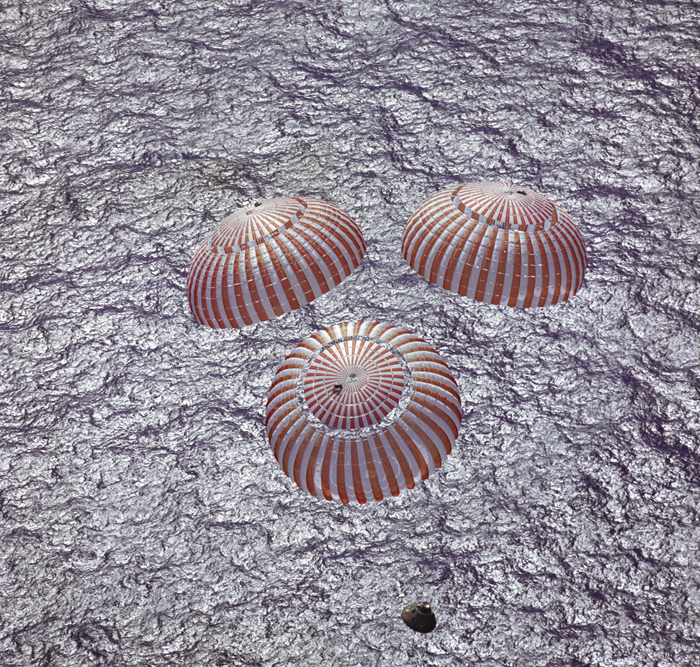Space History Photo: Apollo 16 Recovery

In this historical photo from the U.S. space agency, the Apollo 16 command module, with astronauts John W. Young, Thomas K. Mattingly II and Charles M. Duke Jr. aboard, nears splashdown in the central Pacific Ocean to successfully conclude a lunar landing mission. This overhead picture was taken from a recovery aircraft seconds before the spacecraft hit the water. The splashdown occurred at 290:37:06 ground elapsed time at 1:45:06 a.m. (CST), April 27, 1972, at coordinates of 00:43.2 degrees south latitude and 156:11.4 degrees west longitude, a point approximately 215 miles southeast of Christmas Island.
Each weekday, SPACE.com looks back at the history of spaceflight through photos (archive).
Get the Space.com Newsletter
Breaking space news, the latest updates on rocket launches, skywatching events and more!
Join our Space Forums to keep talking space on the latest missions, night sky and more! And if you have a news tip, correction or comment, let us know at: community@space.com.

The National Aeronautics and Space Administration (NASA) is the U.S. government agency in charge of the civilian space program as well as aeronautics and aerospace research. Founded in 1958, NASA is a civilian space agency aimed at exploring the universe with space telescopes, satellites, robotic spacecraft, astronauts and more. The space agency has 10 major centers based across the U.S. and launches robotic and crewed missions from the Kennedy Space Center in Cape Canaveral Florida. It's astronaut corps is based at the Johnson Space Center in Houston. To follow NASA's latest mission, follow the space agency on Twitter or any other social channel, of visit: nasa.gov.









